calsfoundation@cals.org
Woodruff County
| Region: | Northeast |
| County Seat: | Augusta |
| Established: | November 26, 1862 |
| Parent Counties: | Arkansas, Lawrence |
| Population: | 6,269 (2020 Census) |
| Area: | 585.97 square miles (2020 Census) |
| Historical Population as per the U.S. Census: | |||||||||
|
1810 |
1820 |
1830 |
1840 |
1850 |
1860 |
1870 |
1880 |
1890 |
1900 |
|
– |
– |
– |
– |
– |
– |
6,891 |
8,646 |
14,009 |
16,304 |
|
1910 |
1920 |
1930 |
1940 |
1950 |
1960 |
1970 |
1980 |
1990 |
2000 |
|
20,049 |
21,547 |
22,682 |
22,133 |
18,957 |
13,954 |
11,566 |
11,222 |
9,520 |
8,741 |
|
2010 |
2020 |
|
|
|
|
|
|
|
|
|
7,260 |
6,269 |
|
|
|
|
|
|
|
|
| Population Characteristics as per the 2020 U.S. Census: | ||
| White |
4,255 |
67.9% |
| African American |
1,613 |
25.7% |
| American Indian |
8 |
0.1% |
| Asian |
22 |
0.4% |
| Native Hawaiian or Other Pacific Islander |
0 |
0.0% |
| Some Other Race |
53 |
0.8% |
| Two or More Races |
318 |
5.1% |
| Hispanic Origin (may be of any race) |
96 |
1.5% |
| Population Density |
10.7 people per square mile |
|
| Median Household Income (2019) |
$32,845 |
|
| Per Capita Income (2015–2019) |
$23,423 |
|
| Percent of Population below Poverty Line (2019) |
25.2% |
|
Woodruff County, a level, fertile plain watered and drained by the White and Cache rivers, was once home to many Native Americans who inhabited the area when the first white settlers arrived. Little is known about the early inhabitants, but the mounds they built for worship, burial, and living can be found in many areas of the county, particularly near Cotton Plant and McCrory, though farming operations have leveled most of the sites.
The White River forms most of the western boundary of Woodruff County. The Cache River and Bayou DeView, confluents of the White River, also cut through the county. The five incorporated towns in Woodruff County are Augusta (the county seat), McCrory, Cotton Plant, Patterson, and Hunter.
Louisiana Purchase through Early Statehood
Woodruff County, thick with trees and swampy areas, received little attention from Spanish or French explorers, though the French named the Cache River. When the United States made the Louisiana Purchase in 1803, the area was sparsely settled. The state’s population was a little over 1,000 at the time.
When Arkansas became a territory in 1819, what is now Woodruff County was a part of Lawrence and Arkansas counties. In 1820, part of present-day Woodruff County was included in Independence and Phillips counties when the counties were formed. In 1827, St. Francis County was formed from part of present-day Phillips and Woodruff counties, and in 1829, Jackson County was formed and included the rest of present-day Woodruff County.
The steamboat Clermont No. 2 sank in the White River north of Augusta on December 4, 1851. Twenty-two passengers died in the accident.
Civil War through Reconstruction
Woodruff County was established on November 26, 1862, but following the confusion of the Civil War, it had to be re-approved in 1865. Augusta, which had been the Jackson County seat in 1852–53, was named Woodruff County seat and remained so, even though court sessions sometimes were held in Cotton Plant and McCrory for convenience. The county was named for William Woodruff, editor of the Arkansas Gazette. Thomas Hough, an Augusta founder, played an important part in the founding and organization of Woodruff County. In 1870, Hough sold his residence in Augusta to the county for $28,000 to be used for a courthouse and public square.
During the Civil War, most of the citizens of Woodruff County opposed secession but lent their support to the Confederacy, and several battles were fought in the county. The most notable were the Action at Fitzhugh’s Woods and the Action at Hill’s Plantation, both Union victories. Sergeant Edward Pike received the Medal of Honor for his actions at Hill’s Plantation. A small force of Union troops occupied Augusta for a short time in the winter of 1864–1865 as part of the Augusta Expedition. Other engagements took place in the county on April 21–22, 1864; August 10, 1864; and December 7–8, 1864.
There was much unrest in the county after the war, and in December 1868, Republican governor Powell Clayton declared martial law in Woodruff County and sent a company of militia to search for members of the Ku Klux Klan (KKK), which was strong in the county during Reconstruction. Their commander, General Daniel Phillips Upham, arrested twelve of the leading citizens of Augusta and held them to prevent resistance. Several citizens who protested were killed, and the town was looted by the militia.
Post Reconstruction through the Gilded Age
In the years after the Civil War, Woodruff County prospered with wood and agriculture industries. Sawmills and woodworking factories thrived, making use of the many acres of timber in the county. In the late 1800s and early 1900s, railroads began to move into the county, and towns sprang up around them, increasing the county’s population each year and greatly improving the economy. Cotton, corn, oats, and hay thrived in the fertile, well-watered soil, and the two rivers in the county by which to ship products added to the area’s prosperity.
In 1901, a court district was created to serve southern Woodruff County, with money set aside for a courthouse and jail at Cotton Plant. The old courthouse in Augusta was torn down for a new courthouse and jail. Both courthouses were designed by Charles Thompson. For a while, the town of McCrory also had its own courthouse, but soon the functions of all three were consolidated in Augusta. The courthouse there is on the National Register of Historic Places.
Two lynchings reportedly took place in the county in the late nineteenth and early twentieth centuries. Will McLendon lost his life in 1893 after allegedly committing murder and robbery but may have died in jail rather than at the hands of a mob. Lynched in 1911, Arthur Dean was accused of killing two people and committing other crimes.
World War II through the Modern Era
With high prices for rice prevailing during World War I and World War II, the county cleared many acres for rice production. Drainage districts were organized, and drainage channels cut through the lowlands. From 1950 to 1955, Woodruff County had about 3,000 acres cleared for rice. In 2004, it had 62,400 acres in rice and ranked tenth in production among the state’s seventy-five counties. However, soybeans are Woodruff County’s main crop, with 119,500 acres producing 4,643,000 bushels in 2004. In 1880, the amount of improved land in Woodruff County was 40,671 acres. In 2004, of the county’s 380,195 acres of land, 284,731 was farmland, with 255,216 acres in crops.
Woodruff County has had several factories, including Sloan Valve, Centoco, and Worldwide Labeling, and a few large farm service companies, but one of the main contributors to the economy is hunting, which has become increasingly important. Much of this is because of the 6,394-acre Rex Hancock/Black Swamp Wildlife Management Area established along the Cache River in 1971 and owned by the Arkansas Game and Fish Commission. Several acres were reforested, and two wetland complexes were being developed to provide habitat for waterfowl. The wildlife area is mostly low bottomland and swamp, and it offers some of the best duck hunting in the state. Many hunters come from surrounding states, some flying into local air strips or the Woodruff County Airport, to take up temporary residence in the county during duck and deer season. Fishing is also gaining popularity, especially of catfish. Several hunting clubs, bed and breakfast inns, and specialty hunting enterprises have been established.
The Highway 64 Speedway on U.S. 64 between Augusta and McCrory was a three-eighths-mile, banked dirt track and was locally owned and operated. It ran late model, pure stock, modifieds, street stock, and e-mod cars. The track was in operation only intermittently between 2001 and 2007. The state’s first harvest of medical marijuana was undertaken in 2019 in a facility in Cotton Plant.
Multiple sites are listed on the National Register of Historic Places. These include the McCrory Waterworks, the Cotton Plant Water Tower, Jess Norman Post 166 American Legion Hut, and the Fitzhugh Snapp Company.
Education
Cotton Plant Academy operated from the 1880s to 1950. Established by the Northern Presbyterian Church, the co-educational residential school educated African American children.
Woodruff County has two school districts. McCrory School District operates an elementary and a high school. Augusta Public School System annexed Cotton Plant School District in 2004. Cotton Plant High School closed after the consolidation, but Cotton Plant Elementary remained open through 2014, when all operations ceased, and the remaining students were moved to the Augusta elementary campus. Augusta operates an elementary and a high school.
Famous Residents
Notable Woodruff County residents include Medal of Honor recipient Gilbert Georgie Collier; gospel and blues singer and electric guitarist Sister Rosetta Tharpe of Cotton Plant; and bluesman Peatie Wheatstraw of Cotton Plant, whose real name was William Bunch. The first woman elected to represent Arkansas in the U.S. House of Representatives, Fannie Pearl Peden Oldfield, was a native of Woodruff County. Author Anita Blackmon, photographers Hugo and Gayne Preller, and physician John William Morris all resided in the county.
For additional information:
Biographical and Historical Memoirs of Eastern Arkansas. Chicago: Goodspeed Publishing Company, 1890.
Brownderville, Greg Alan. Deep Down in the Delta. Cotton Plant, AR: The Doodlum Brothers Press, 2005.
Central Delta Historical Journal. Brinkley, AR: Central Delta Historical Society (1997–).
Herndon, Dallas Tabor. Centennial History of Arkansas. Chicago: S. J. Clarke Publishing Co., 1922.
Rivers and Roads and Points in Between. Augusta, AR: Woodruff County Historical Society (1972–).
Thomas, David Yancey, ed. Arkansas and Its People, A History. New York: The American Historical Society, 1930.
Paula Harmon Barnett
Woodruff County Monitor-Leader-Advocate
Revised 2022, David Sesser, Southeastern Louisiana University
 Augusta Heritage Center
Augusta Heritage Center 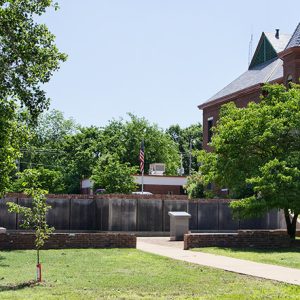 Augusta Veterans' Memorial
Augusta Veterans' Memorial  William Bunch
William Bunch 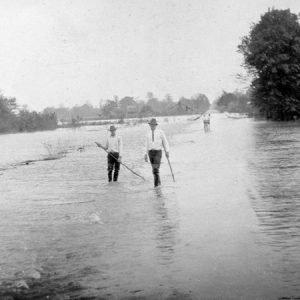 Dixie 1927 Flood
Dixie 1927 Flood 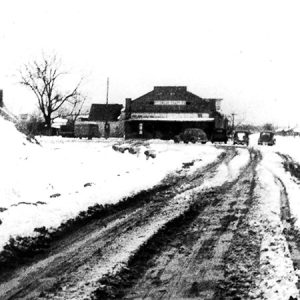 Fitzhugh
Fitzhugh  Gregory Store
Gregory Store 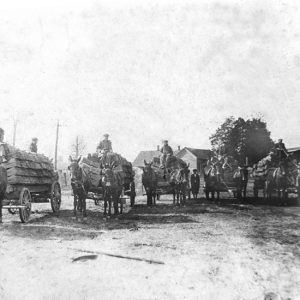 Hauling Cypress Shingles
Hauling Cypress Shingles  Hunter Sawmill
Hunter Sawmill 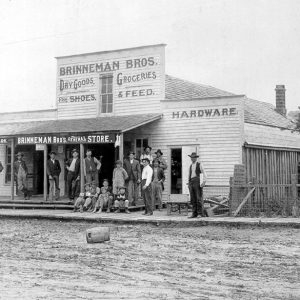 Hunter Store
Hunter Store  Hunter Street Scene
Hunter Street Scene  McCrory Street Scene
McCrory Street Scene 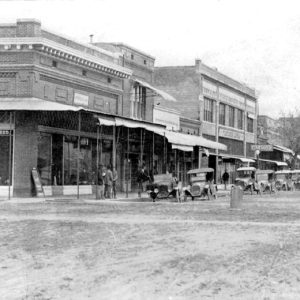 McCrory Street Scene
McCrory Street Scene 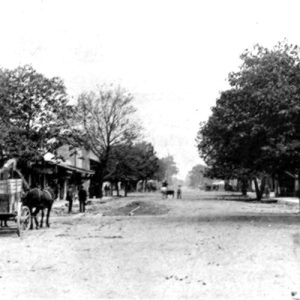 McCrory Street Scene
McCrory Street Scene  J. W. Morris
J. W. Morris  Patterson Street Scene
Patterson Street Scene 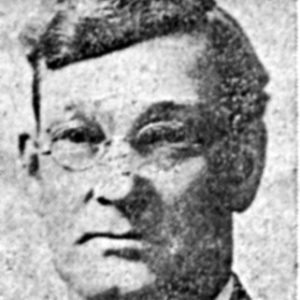 Marshall Patterson
Marshall Patterson  Woodruff County Courthouse
Woodruff County Courthouse  Old Woodruff County Courthouse
Old Woodruff County Courthouse  Woodruff County Courthouse
Woodruff County Courthouse 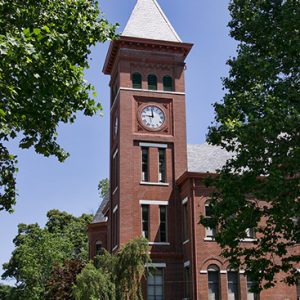 Woodruff County Courthouse
Woodruff County Courthouse 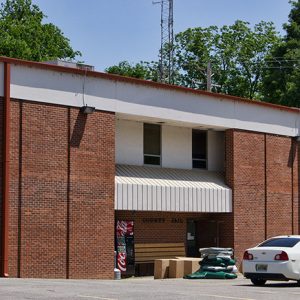 Woodruff County Jail
Woodruff County Jail  Woodruff County Map
Woodruff County Map  Woodruff County News
Woodruff County News 




A historical museum was founded in Cotton Plant on July 17, 2014. Cotton Plant has a long-standing history of being home to history makers, and the museum is a testament to the fact. Sister Rosetta Tharpe of Cotton Plant was inducted into the Cotton Plant Historical Museum Entertainers Wall of Fame the year it was founded. Honorable Mayor Willard C. Ryland signed a proclamation declaring that March 20, 2015, would be commemorated to mark Tharpes 100th birthday. This proclamation is housed in the museum with seven of Sister Rosetta Tharpe’s original Decca records. Highway Memorial HB 2179, sponsored by Representative Chris Richey, designated portions of highways to honor some of the most influential musicians in the development of blues, soul, country, rockabilly, rhythm and blues, gospel who hailed from the Arkansas Delta, including Johnny Cash, Levon Helm, Louis Jordan, and Sister Rosetta Tharpe. Sister Rosetta Tharpe was one of the 2018 nominees for the Rock and Roll Hall of Fame.